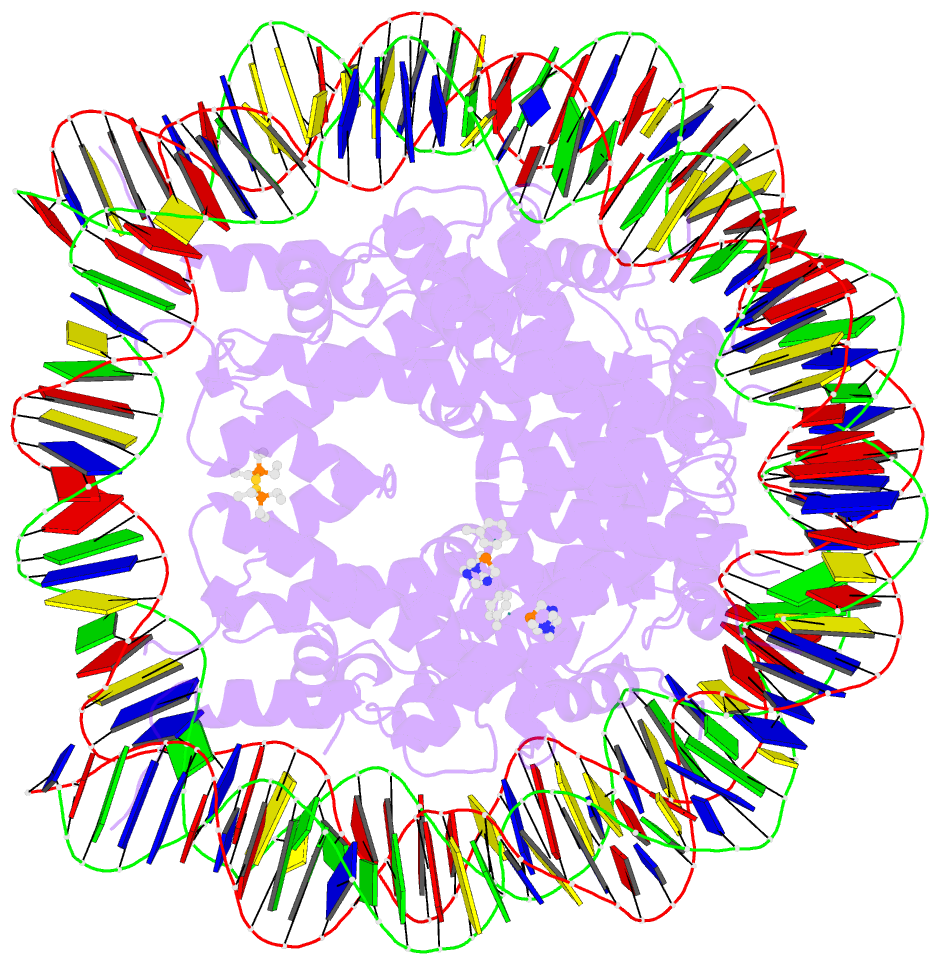Summary information and primary citation
- PDB-id
-
5dnn;
SNAP-derived features in text and
JSON formats
- Class
- structural protein-DNA
- Method
- X-ray (2.8 Å)
- Summary
- Nucleosome core particle containing adducts of
gold(i)-triethylphosphane and ruthenium(ii)-toluene pta
complexes
- Reference
-
Adhireksan Z, Palermo G, Riedel T, Ma Z, Muhammad R,
Rothlisberger U, Dyson PJ, Davey CA (2017): "Allosteric
cross-talk in chromatin can mediate drug-drug
synergy." Nat Commun, 8,
14860. doi: 10.1038/ncomms14860.
- Abstract
- Exploitation of drug-drug synergism and allostery could
yield superior therapies by capitalizing on the immensely
diverse, but highly specific, potential associated with the
biological macromolecular landscape. Here we describe a
drug-drug synergy mediated by allosteric cross-talk in
chromatin, whereby the binding of one drug alters the
activity of the second. We found two unrelated drugs,
RAPTA-T and auranofin, that yield a synergistic activity in
killing cancer cells, which coincides with a substantially
greater number of chromatin adducts formed by one of the
compounds when adducts from the other agent are also
present. We show that this occurs through an allosteric
mechanism within the nucleosome, whereby defined histone
adducts of one drug promote reaction of the other drug at a
distant, specific histone site. This opens up possibilities
for epigenetic targeting and suggests that allosteric
modulation in nucleosomes may have biological relevance and
potential for therapeutic interventions.





